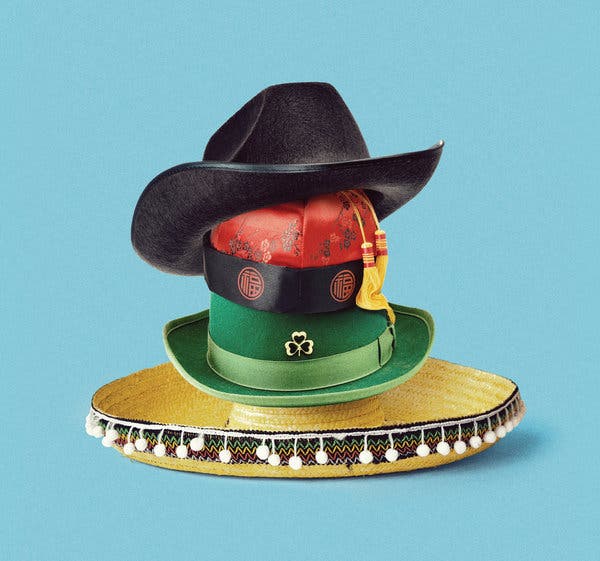Headwraps have long held a significant place in various cultures, from Africa and the Caribbean to the Americas and beyond. These ornamental fabrics traverse the realms of fashion, identity, and heritage. Yet with their increasing popularity in contemporary fashion trends, particularly among non-Black individuals, a salient question arises: are headwraps cultural appropriation? This query delves into myriad nuances involving cultural respect, identity, and historical context.
At first glance, it is essential to recognize the manifold meanings central to headwraps. For many African and Caribbean women, they symbolize empowerment, pride, and a connection to ancestry. Historically, headwraps conveyed status and marital status, often dictated by intricate designs and vibrant colors. They served as both a protective adornment and a means of expression, enveloping the wearer’s head in layers of cultural significance.
The narrative surrounding cultural appropriation is fraught with complexity. Simply put, cultural appropriation occurs when individuals from a dominant culture adopt elements from a marginalized culture without understanding their significance or history. In this regard, the appropriation of headwraps by non-Black individuals can create a discomforting paradox: commendable curiosity or faux pas exploitation? Such distinctions matter significantly in evaluating the implications of one’s choice to wear a headwrap.
To dissect the cultural appropriation debate surrounding headwraps, one must consider several critical factors: intent, understanding, and historical context. Firstly, intent plays an indispensable role. Is the individual wearing the headwrap as a fashionable accessory detached from its origins? Or, conversely, do they embrace it as a form of solidarity, understanding its deep-rooted significance? While the latter might seem laudable, there is a fine line between appreciation and appropriation.
Next, comprehension of the historical and cultural context proves paramount. The legacies of colonialism and systemic oppression intertwine with the narratives of headwraps. During slavery, enslaved women in the United States were mandated to wear kerchiefs, symbolizing their subjugated status. Today, those same practices give rise to a sense of reclaimed identity, making headwraps a vestige of resistance against a tainted past. Thus, wearing a headwrap devoid of this context may signify an ignorance of the struggles entwined with it.
Moreover, when examining cultural appropriation, it is paramount to recognize the implications of privilege. Those with societal power, often enjoying privileges based on race, class, or education, may unwittingly strip cultural artifacts of their weighty histories. The act of wearing a headwrap, then, can morph from a mere fashion statement into a vehicle for perpetuating inequitable power dynamics, often sidelining the voices of those from whom these traditions originate.
Discussions around cultural appropriation also juxtapose the concepts of cultural exchange and appreciation. Cultural exchange, when done respectfully, allows for the amalgamation of ideas and practices while acknowledging their origins. It fosters a richer understanding of diversity and promotes artistic collaboration. Appreciation, on the other hand, recognizes the nuances and emotional undertones attached to cultural expressions. A respectful engagement with cultural artifacts serves as a bridge, creating a dialogue rather than a monologue about heritage.
Wearing a headwrap can provoke powerful conversations about racial identity and the complexity of American culture. One must ask: How do we navigate these spaces with sensitivity? Engaging with the story behind a headwrap is one way to approach this conversation. Understanding how it was worn historically, its significance in communal and familial settings, and the voices of Black women who wear them today can inform better practices around cultural adaptation.
In a world that increasingly embraces diversity, a paradigm shift in our perspective on cultural artifacts like headwraps may be overdue. It is critical to celebrate and elevate the narratives that honor authenticity. Learning about the meaning, significance, and journey of headwraps from marginalized communities allows individuals to wear them advisory rather than casually. Furthermore, respecting and amplifying the voices of those who originated these practices promotes a collective cultural synergy.
Ultimately, the question of whether headwraps epitomize cultural appropriation does not yield a simple answer. It exists within a spectrum of understanding that varies from one context to another. Cultural sensitivity, openness, and a willingness to engage in difficult conversations serve as pivotal tools in this ongoing debate. Seeking knowledge and understanding the histories behind cultural practices enriches one’s experience while fostering respect among diverse communities.
As our societies evolve, so, too, must our understanding of cultural representation. The act of wearing a headwrap thus challenges us to redefine appreciation versus appropriation. It requires us to scrutinize our motivations and the histories entwined with the artifacts we choose to adopt. This mindful discourse can cultivate a landscape where all individuals, irrespective of their background, can celebrate diversity while upholding the dignity of cultural heritage.
In conclusion, while headwraps can signify cultural pride, personal adornment, and style, the act of wearing them is enmeshed in deeper historical narratives. By fostering a shared understanding and respect for cultural symbols, we can contribute to a richer, more inclusive dialogue that honors both heritage and personal expression.
